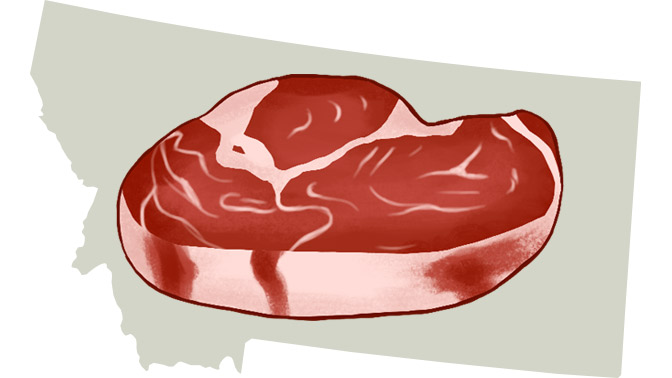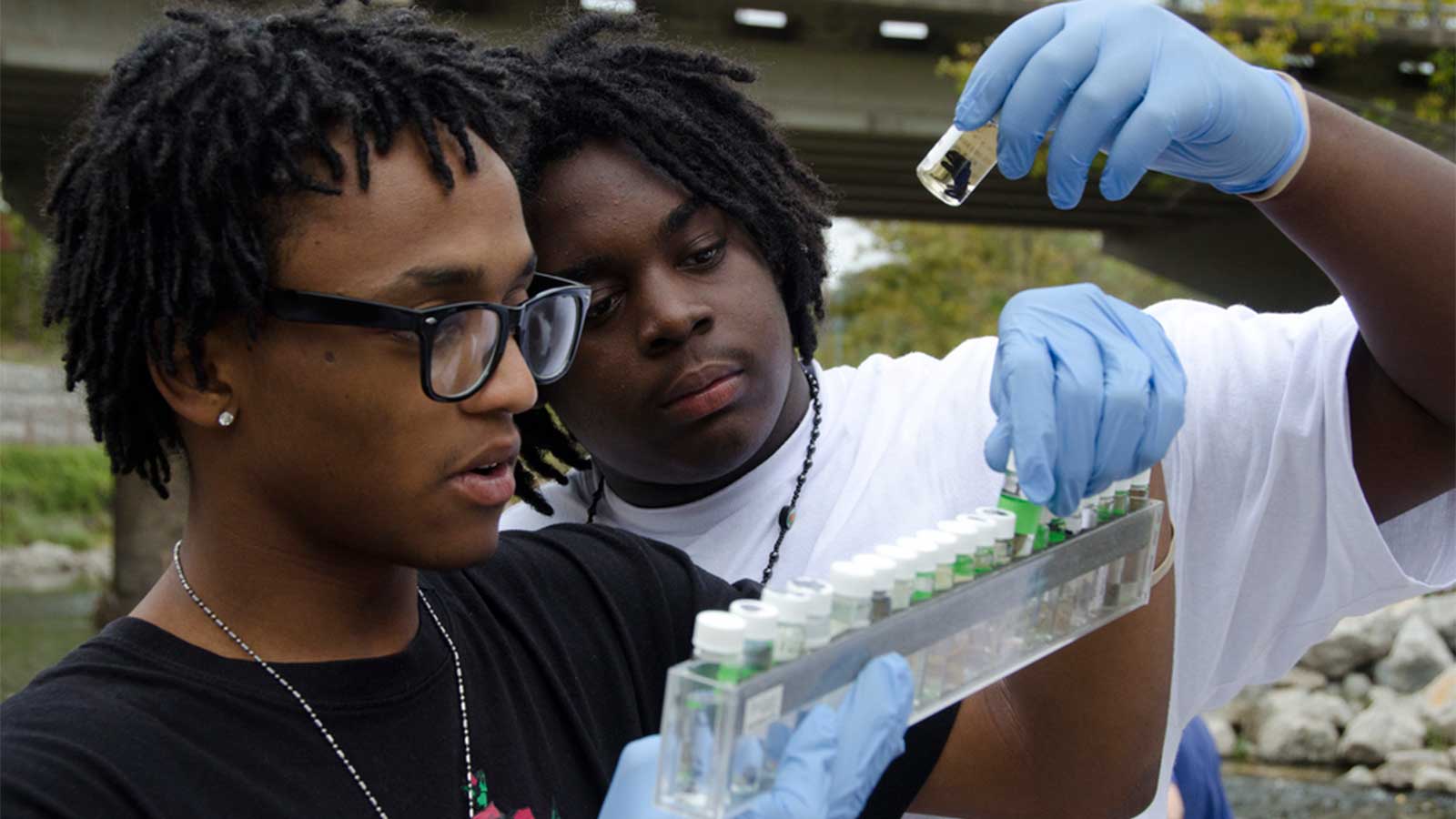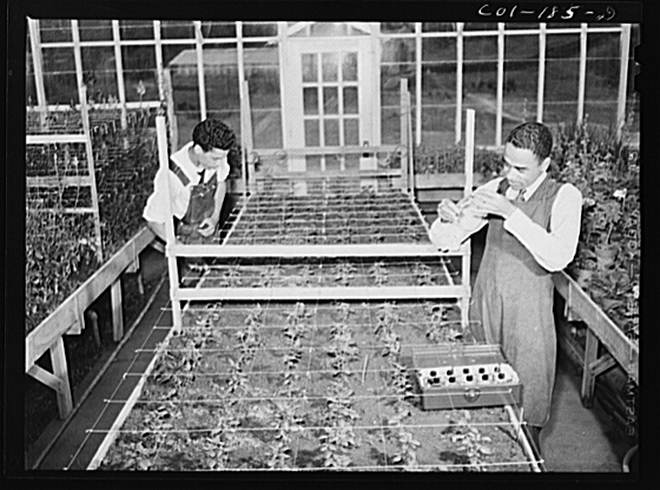The Cool Schools of 2014 list in this month’s issue of Sierra magazine ranks the institutions of higher learning with the greenest policies and practices. There are 173 schools on the list. Not one of them is a historically black college or university (HBCU). Princeton does the Sierra Club one better, literally: Of the 332 institutions in its Green Colleges guide, only the historically black Cheney University of Pennsylvania made the cut.
There are over 100 HBCUs in this country currently serving over 300,000 mostly African-American students. The fact that some 99 percent of those schools aren’t on the greenest schools lists probably reinforces the idea among environmental employers that there are few black people qualified or available for green jobs. We know that this notion is incorrect — there are plenty of qualified people of color out there, they’re just sorely overlooked. So is it fair to render historically black universities invisible in discussions about the greening of academia?
There are a few explanations for why HBCUs went unmentioned. They may not have responded to inquiries or enlisted in the surveys that Sierra and Princeton used to create their lists. Or perhaps none truly were green enough to qualify. Historically black colleges are also historically financially struggling colleges, which means many don’t have the funds to trick out their campuses with all the cool green gadgetry of better endowed universities.
These explanations, and a few others, can be found in the HBCU Green report, produced in part by the nonprofit Building Green Initiative. That report, the second version of its kind, dispels the notion that black colleges aren’t green enough and elucidates why they may not live up to the list makers’ criteria.
And criteria is crucial. Sierra and Princeton weighed factors like how much a university spent on local and organic foods, whether schools used LEED certification guidelines for new construction and building renovations, and whether they had mechanisms for conserving water and energy, to name a few.
HBCUs have not been slouches in any of those departments. Twelve of them have LEED-certified buildings on their campuses, according to the report. Close to 70 percent of them purchase locally grown foods or contract with purchasers that do, while over 45 percent of them spend money on the organic stuff. For saving water, 53 percent use low-flow faucets, 44 percent have low-flow showerheads in their dorms and lockers, and 23 percent employ water metering. Roughly 78 percent track energy conservation — 40 percent of those using a system provided by the Environmental Protection Agency.
But really, conservation is not a novel concept for these black universities, if only out of necessity and survival. Many HBCUs were built during Reconstruction with the goal of developing the agricultural skills of former enslaved African Americans and sharecroppers. Many of those students surely brought far more intimate knowledge of nature from the plantation and beyond — or from their escapes — than the average kid raised in the big houses. Much of what we know about sustainability stems from the work of the ex-slave George Washington Carver, who innovated more with some peanuts than a lot of the billionaire nuts in Silicon Valley.
While it’s environmentally chic to tout pro-small farmer values these days, HBCUs been on that. It’s at the core of the mission of many renowned HBCUs, including Tuskegee (the lab of Carver and Booker T. Washington), North Carolina A&T, Florida Agricultural and Mechanical University (FAMU), and dozens more. The 1890 Morrill Act helped states grant land to black higher learning institutions for this mission.
“The nation has 18 HBCUs with a rural, land-grant agricultural mission to provide a range of technical assistance and outreach activities to minority and limited-resource farmers and ranchers,” explains Paul Reeves, a project developer for National Renewable Solutions, in the report. “These [land-grant HBCUs] play an important role in helping black farmers developing cash crops for the twenty-first century that would have the ability to stabilize their presence on the farm.”
This is isn’t just Reconstruction-era nostalgia, either. Those original green agendas have survived and evolved today, as I was reminded when the EPA renewed a 2008 environmental partnership this week with the Virginia HBCUs Hampton University and Norfolk State, dedicated to increasing the number of people of color studying environmental science and air pollution. Or, when looking forward to the Environmental Youth Symposium for Colleges & Universities this coming Friday, the third year for this event, coordinated by HBCUs in the southeast and the EPA region they occupy.
Some of these schools are also heavily invested in renewable energy, which Reeves calls “the cash crop of the future,” in the report, and are playing their part in curbing climate change.
For example, the University of Maryland Eastern Shore has constructed a 2.2 megawatt solar farm on its campus while planning construction of a wind turbine project and bioremediation pilot plant. “It is planned that these full and pilot-scaled facilities will not only reduce our carbon footprint, but also fully engage faculty and students in production-scale renewable energy generation research projects,” said G. Dale Wesson, vice-president for research and economic development at the university.
With that history and presence in mind, how could the bigwigs overlook these colleges? It could just be that while there is a lot of great green work going on at HBCUs, that they don’t scale up to the level of their Division I counterparts. They’d like to, but they don’t have the other kind of green needed to do it.
Only 37 percent of schools represented in the HBCU report have signed on to the American College and University Presidents’ Climate Commitment, but 33 percent of them said that was because of a lack of resources to commit to the sustainability policies required in that covenant. Close to three-quarters of the schools reported not having access to financing for sustainability investments.
Those same factors could explain why these schools might not want to be bothered with these green lists. But that’s something that could probably be controlled for either upfront in the inquiries or elsewhere in the indexing process. If the criteria only allows for the best-financed to join the “cool schools” club, then HBCUs are left with the stigma of being, well, uncool, despite their current and historical efforts.
President Obama has offered some relief for HBCU’s finance problems, particularly for sustainability efforts. In the meantime, a little more outreach from the list makers would go a long way.
“While we know the lists are developed based on responses to surveys, perhaps better outreach techniques must be employed in the future to ensure inclusion of sustainability efforts by the nation’s HBCU’s,” said Felicia Davis, director of the Building Green Initiative.
Their exclusion does not come without consequences. As Davis said, “Recognition in the sustainability arena can result in additional revenue and enrollment so it is really important for our HBCUs to be included.”
In other words, the next green game-changers, the next George Washington Carvers, are in the labs of historically black schools, but finding them might require adjusting the rules of the game.
(Ed Note: A previous version of this stated that the Morrill Act of 1862 granted land for black universities. It was actually the Morrill Act of 1890. I regret the error.)




